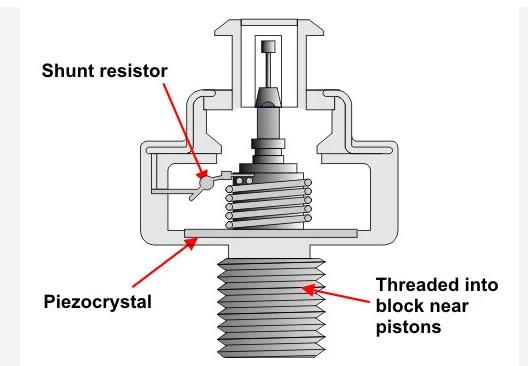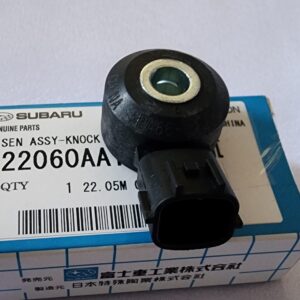Now that you know what knock sensors are and why they are important, let’s take a closer look at how they work. A knock sensor is essentially a small device that detects vibrations and sounds from the engine block and sends a signal to the engine control unit (ECU) to adjust ignition timing. Ignition timing refers to the moment when the spark plug fires to ignite the air-fuel mixture in the cylinder. If the timing is too advanced, meaning the spark plug fires too early, it can cause an engine knock. If the timing is too retarded, meaning the spark plug fires too late, it can cause poor performance and fuel efficiency.
A knock sensor is usually mounted on the engine block, cylinder head, or intake manifold, depending on the vehicle model. It consists of a piezoelectric element that generates a voltage when it is subjected to mechanical stress. The piezoelectric element is attached to a resonant chamber that amplifies the vibrations caused by engine knock. The knock sensor also has a wire that connects it to the ECU.
When an engine knock occurs, the knock sensor picks up the vibration and sound and converts it to an electronic signal. The signal is proportional to the intensity and frequency of the knock. The ECU receives the signal and analyzes it to determine if it is caused by an engine knock or other noise sources, such as a valve train or accessory belt. If the ECU detects an engine knock, it retards the ignition timing by a few degrees until the knock stops. This way, the knock sensor helps prevent detonation and protect the engine from damage.
The following diagram shows how a knock sensor works:

$22,408.00
Now that you know what knock sensors are and why they are important, let’s take a closer look at how they work. A knock sensor is essentially a small device that detects vibrations and sounds from the engine block and sends a signal to the engine control unit (ECU) to adjust ignition timing. Ignition timing refers to the moment when the spark plug fires to ignite the air-fuel mixture in the cylinder. If the timing is too advanced, meaning the spark plug fires too early, it can cause an engine knock. If the timing is too retarded, meaning the spark plug fires too late, it can cause poor performance and fuel efficiency.
A knock sensor is usually mounted on the engine block, cylinder head, or intake manifold, depending on the vehicle model. It consists of a piezoelectric element that generates a voltage when it is subjected to mechanical stress. The piezoelectric element is attached to a resonant chamber that amplifies the vibrations caused by engine knock. The knock sensor also has a wire that connects it to the ECU.
When an engine knock occurs, the knock sensor picks up the vibration and sound and converts it to an electronic signal. The signal is proportional to the intensity and frequency of the knock. The ECU receives the signal and analyzes it to determine if it is caused by an engine knock or other noise sources, such as a valve train or accessory belt. If the ECU detects an engine knock, it retards the ignition timing by a few degrees until the knock stops. This way, the knock sensor helps prevent detonation and protect the engine from damage.
The following diagram shows how a knock sensor works:



Get E-mail updates about our latest products and special offers.
Sensors and More is Jamaica’s ultimate online auto parts store. Established in 2020, we specialize in genuine electrical parts for Japanese, Read more…
Reviews
There are no reviews yet.